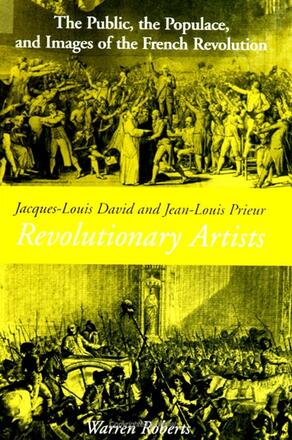
Jacques-Louis David and Jean-Louis Prieur, Revolutionary Artists
The Public, the Populace, and Images of the French Revolution
Alternative formats available from:
A comparative study of the French Revolution's most famous artist and a little-known illustrator.
Description
By offering a comparative study of Jacques-Louis David, the most famous artist of the French Revolution, and Jean-Louis Prieur, a little-known illustrator, this book tracks the political careers of the two artists and offers new insights to the relationship between the arts and the politics of the French Revolution.
Warren Roberts is Distinguished Teaching Professor in the Department of History at The University at Albany, State University of New York. He is the author of Morality and Social Class in Eighteenth-Century French Literature and Painting; Jane Austen and the French Revolution; and Jacques-Louis David, Revolutionary Artist: Art, Politics, and the French Revolution.
Reviews
"By using the contrast between David and Prieur as a vehicle for the development of the distinction between public and populace, the author's formidable and sure-footed talents of artistic analysis are employed for 'historical' as well as 'art-historical' purposes, thereby allowing him to make an important contribution to current French revolutionary historiographical debates." — Barry Shapiro, Allegheny College
"A thorough and insightful analysis of the tableaux by the artist Jean-Louis Prieur whose work has not received the attention it deserves. It also provides a comparison of his work with that of Jacques-Louis David which is much better known, a comparison which brings out aspects of David's painting which otherwise may be overlooked. The treatment of these two artists is linked to a brilliant analysis of the French Revolution." — James A. Leith, Queen's University
"This in an outstanding book written by a seasoned, knowledgeable scholar in the field who uses to great advantage his expertise in both history and art history. It constitutes a significant contribution to cultural history." — Gita May, Columbia University